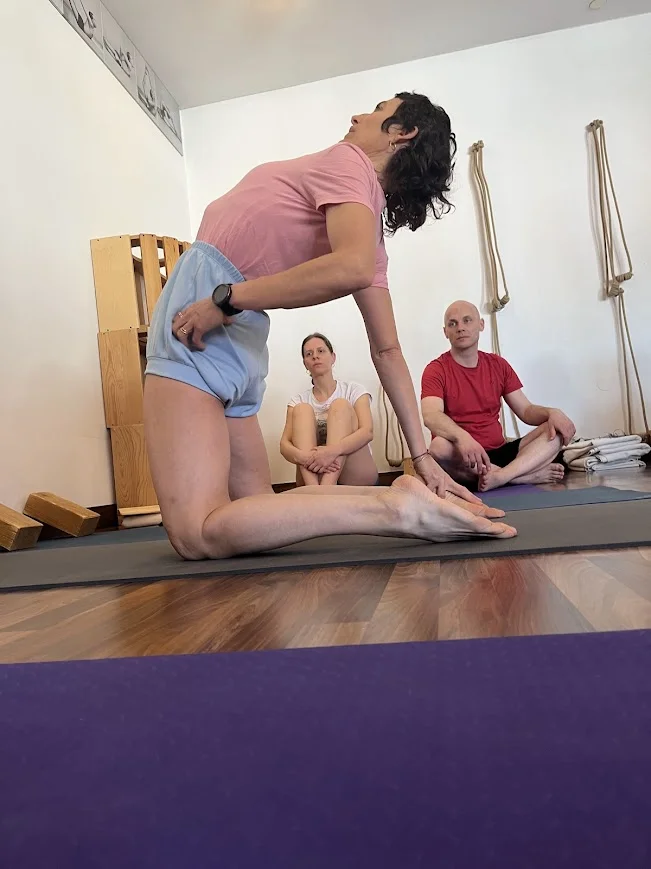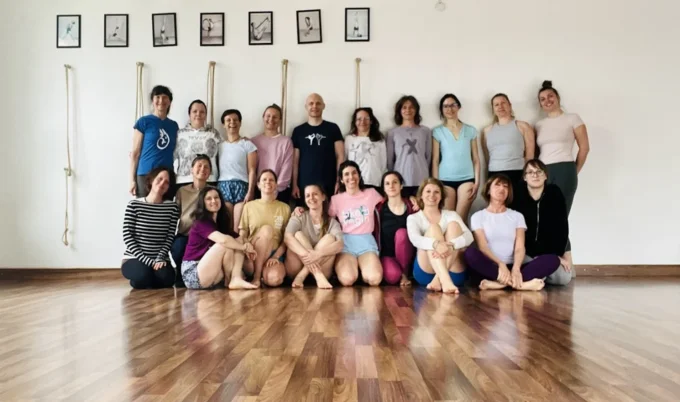On Saturday, April 5th, the Prana Yoga Center in Kranj was filled with the powerful vibration of OM and the invocation of the sage Patanjali, ceremoniously marking the beginning of a long-awaited workshop with the exceptional teacher Chiara Travisi. From the moment of arrival, it was clear that something special was about to unfold – and the expectations were not only met but far exceeded.
The event was organized with great dedication and expertise by Marina Vrbavac, founder of Hasta Yoga, an active member of the Iyengar Yoga Association of Slovenia, and an experienced teacher who regularly leads weekend workshops across Slovenia. Her work has long combined tradition, precision, and heartfelt presence, all of which could be felt throughout the day’s atmosphere.
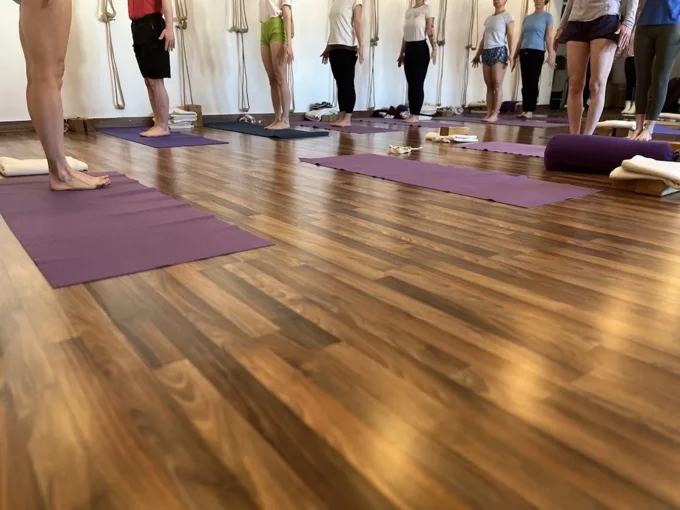
About Chiara Travisi
Chiara Travisi is one of the founders of the Iyengar Yoga Institute Milano and is deeply dedicated to both the physical and philosophical aspects of yogic practice. After completing a PhD in Environmental Economics, where she focused on the valuation of intangible assets such as the natural environment and yoga, her life path led her deeper into the world of Iyengar Yoga.
She trained with leading teachers in Italy and at the prestigious Ramamani Iyengar Memorial Yoga Institute (RIMYI) in Pune, India, considered the heart of the Iyengar tradition. Additionally, she is a teacher, examiner, and trainer within Light on Yoga Italia (LOY) – the Italian association for Iyengar Yoga – and one of the co-creators of the official UNI standard for the yoga teaching profession in Italy, a significant step toward the professionalization of the field.
Chiara is known for her teaching style rooted in precision, thoughtfulness, and a deep understanding of the body, while remaining open, warm, and remarkably clear in her approach. Her presence is both grounded and inspiring – a true master of teaching, capable of building a bridge between body, mind, and spirit.
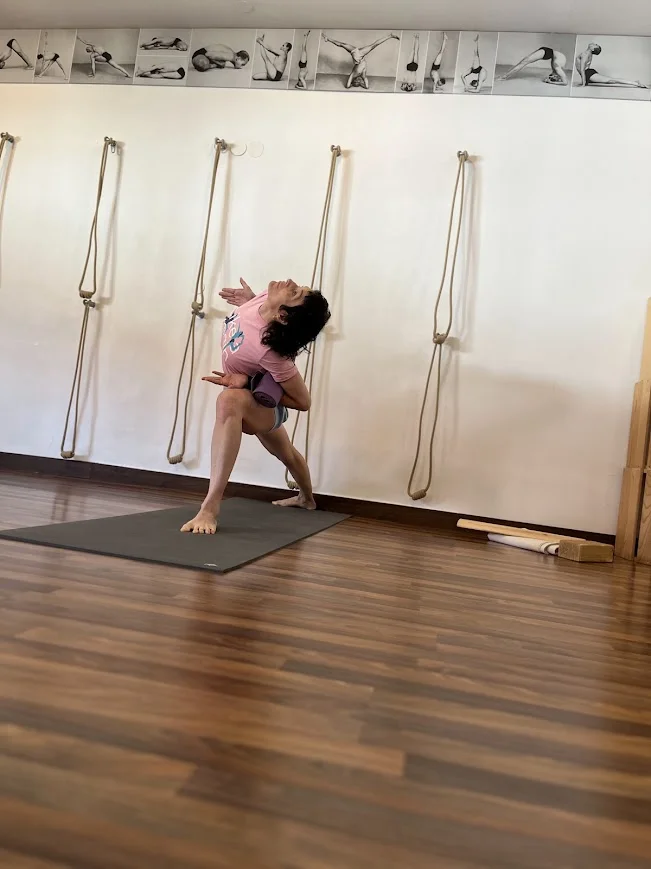
Workshop: deep into backbends – safely and with understanding
We began the workshop in tadasana, with a yoga strap in our hands, which we used to start opening the chest – a basic, yet crucially important step for further exploration of backbends. True to Iyengar yoga, Chiara guided us gradually, with great precision and a focus on internal directions that allow for safe, stable, and at the same time conscious execution of even the more demanding asanas.

Through standing poses such as trikonasana and parsvakonasana, we deepened the sense of space in the chest using a special prop – a rolled Spezial yoga mat, which Chiara described as highly adaptable and effective. This space, however, is not just physical – it also opens the inner world, allows for greater freedom in the breath, and prepares the body for quality, deep backbends.
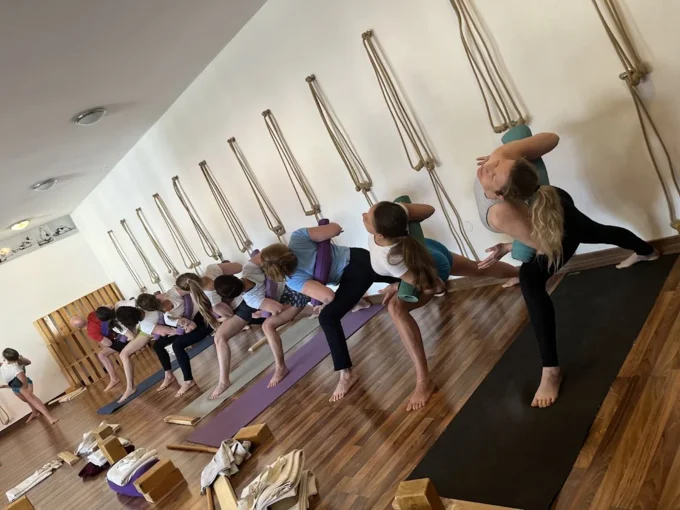
A special emphasis was also placed on the psoas – a deep muscle that plays a key role as a bridge between the physical and the subtle. In yogic terms, the psoas is the bridge between the torso and the legs, between the earthly and the inner world. It provides stability in the pelvis while also allowing flexibility and flow, which are essential for light, fluid backbends. When the psoas is activated but not tightened, the body can move with more trust, elegance, and inner connection.
Chiara constantly encouraged us to perceive internal movements, listen to the body, and be aware of the energy flowing through each movement. Each pose became an opportunity to deepen our presence, not only physically, but also mentally and emotionally.
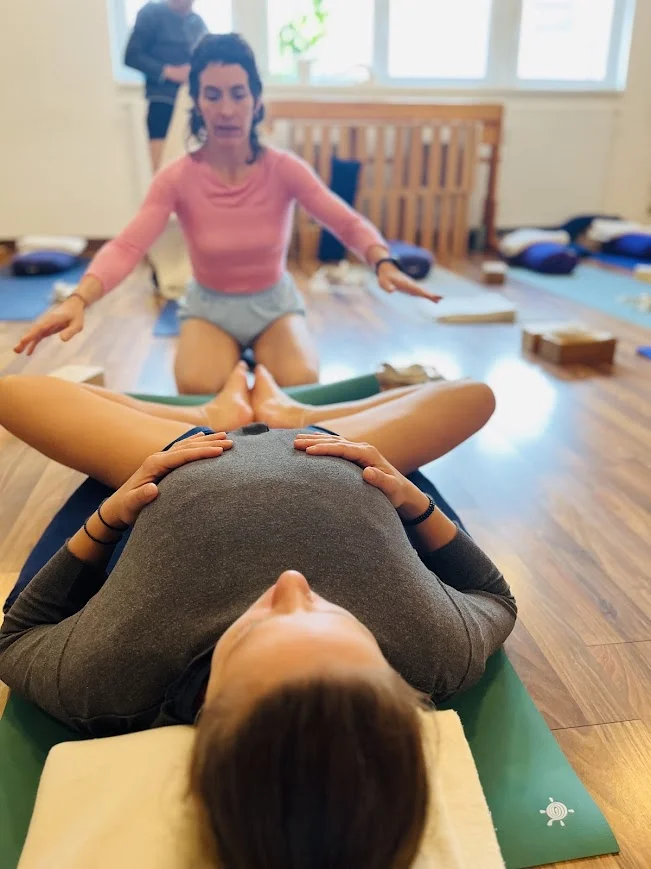
Sunday: Awareness of the back body and supported backbends
On the second day of the workshop, we began with wall work, focusing on Shalabhasana. The emphasis was on the precise positioning of the pelvis and understanding how to activate the glutes subtly, without unnecessary tension. This established the foundation for stability and freedom in the lumbar region, which is essential for all forms of backbends.

Next, we moved into Dhanurasana and Ustrasana – using a chair, where the head could rest, allowing for more relaxation – and Parighasana, also supported by a chair, which created even more space in the torso and encouraged the expansion of the breath in all directions.
